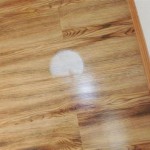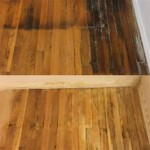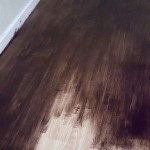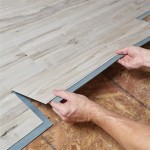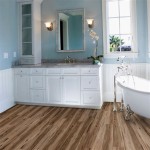Installing Hardwood Floors on Slab: A Comprehensive Guide
Installing hardwood floors on a concrete slab presents a unique set of challenges compared to installing them over a wood subfloor. Concrete, due to its inherent porosity, can retain moisture, potentially damaging the wood over time. Therefore, careful preparation and adherence to specific installation techniques are crucial for a successful and long-lasting hardwood floor. This article outlines the essential steps involved in installing hardwood floors on a concrete slab, emphasizing the critical considerations for moisture control and proper installation methods.
Acclimation: The Foundation of a Successful Installation
Acclimation is arguably the most crucial step in installing hardwood floors, regardless of the subfloor type. However, its importance is amplified when dealing with concrete slabs. Hardwood, being a natural material, expands and contracts in response to changes in humidity and temperature. Acclimation allows the wood to adjust to the ambient environment of the installation space, minimizing the chances of warping, cupping, or gapping after installation.
The acclimation process begins by delivering the hardwood flooring to the job site at least three to five days prior to installation, and ideally for a longer period (up to a week or more), depending on the local climate and the wood species. The boxes of flooring should be stored in the room where they will be installed, allowing the wood to experience the same temperature and humidity conditions as the room itself. The temperature should be maintained within the normal living range (typically between 60°F and 80°F) and the relative humidity should be consistent with the environment the floor will experience throughout its service life (ideally between 30% and 50%).
It's essential to stack the boxes in a way that allows for air circulation around them. This can be achieved by placing the boxes on shims or spacers, creating airflow channels. This ensures that all planks are equally exposed to the ambient conditions, promoting even acclimation. Regularly monitor the moisture content of the wood using a wood moisture meter. Aim for a moisture content that is consistent with the equilibrium moisture content (EMC) of the environment.
Failing to properly acclimate hardwood flooring can lead to significant problems after installation. If the wood is too wet when installed, it will shrink as it dries, creating gaps between the planks. Conversely, if the wood is too dry, it will expand after installation, potentially causing buckling or cupping. Therefore, dedicating the necessary time and attention to acclimation is a vital investment in the longevity and aesthetic appeal of the hardwood floor.
Moisture Testing and Mitigation: Protecting Your Investment
Concrete slabs are porous and can contain significant amounts of moisture, even if they appear dry to the touch. This moisture can migrate into the hardwood flooring, causing damage and compromising its structural integrity. Therefore, thorough moisture testing and appropriate mitigation measures are essential before installing hardwood on a concrete slab.
Several methods can be used to assess the moisture content of a concrete slab. The calcium chloride test, also known as the moisture vapor emission rate (MVER) test, is a common method. This test measures the amount of moisture vapor emitted from the concrete surface over a 24-hour period. The results are expressed in pounds per 1,000 square feet per 24 hours. Most hardwood flooring manufacturers specify a maximum MVER value for installation over concrete. Another method is the relative humidity (RH) test, which involves drilling holes into the concrete and inserting probes to measure the relative humidity within the slab. This test provides a more comprehensive assessment of the moisture content throughout the slab.
If the moisture test results exceed the manufacturer's recommendations, moisture mitigation is necessary. Several options are available, depending on the severity of the moisture problem. Applying a moisture barrier membrane to the concrete surface is a common solution. These membranes are designed to prevent moisture from migrating upward into the hardwood flooring. Some moisture barriers are applied as liquid coatings, while others are available as sheet membranes. Another option is to use a subfloor system that incorporates a built-in moisture barrier and provides an air gap between the concrete and the hardwood. These systems can help regulate moisture levels and prevent damage to the flooring.
Selecting the appropriate moisture mitigation method depends on the specific moisture conditions of the concrete slab and the type of hardwood flooring being installed. Consulting with a flooring professional or a concrete specialist is recommended to determine the most effective and reliable solution. Skimping on moisture mitigation can lead to costly repairs or even replacement of the hardwood floor in the future.
Installation Methods: Choosing the Right Approach
Several methods can be used to install hardwood flooring on a concrete slab, each with its own advantages and disadvantages. The choice of installation method depends on factors such as the type of hardwood flooring, the moisture conditions of the concrete slab, and the installer's preference and skill level.
One common method is gluing down the hardwood flooring directly to the concrete slab using a specialized adhesive. This method provides a strong and stable bond between the flooring and the subfloor, minimizing movement and noise. However, it is crucial to use an adhesive that is specifically designed for hardwood flooring and concrete, and to follow the manufacturer's instructions carefully. The concrete surface must be properly prepared by cleaning and leveling it before applying the adhesive.
Another option is to install a floating hardwood floor over a concrete slab. This method involves installing a thin layer of foam or cork underlayment over the concrete, followed by the hardwood flooring. The planks are typically joined together using a tongue-and-groove system, creating a "floating" floor that is not directly attached to the concrete. Floating floors are relatively easy to install and can be a good option for DIY projects. However, they may not feel as solid as glued-down floors, and they can be more prone to noise and movement.
A third method is to install a wood subfloor over the concrete slab and then install the hardwood flooring on top of the wood subfloor. This method creates an air gap between the concrete and the hardwood, which can help regulate moisture levels and improve the floor's comfort and sound insulation. The wood subfloor can be constructed using sleepers (strips of wood) that are attached to the concrete, or by using a pre-fabricated subfloor system. This method provides a more solid and stable floor than a floating floor, but it also requires more time and effort to install.
Regardless of the installation method chosen, it is essential to follow the manufacturer's instructions carefully and to use the appropriate tools and materials. Proper preparation of the concrete surface, including cleaning, leveling, and repairing any cracks or imperfections, is crucial for a successful installation. Consulting with a flooring professional or a qualified installer is recommended to determine the best installation method for your specific situation.
In addition to the above-mentioned key points, consistent monitoring of the room's humidity and temperature after installation is crucial for maintaining the integrity of the hardwood floor. Using humidifiers or dehumidifiers, as needed, can help regulate the environment and prevent excessive expansion or contraction of the wood. Regularly cleaning the floor with appropriate hardwood floor cleaning products is also essential for removing dirt and debris that can damage the finish and wear down the wood over time.
Installing hardwood floors on a concrete slab requires careful planning, meticulous preparation, and adherence to best practices. By prioritizing moisture control, proper acclimation, and selecting the appropriate installation method, homeowners can enjoy the beauty and durability of hardwood flooring for many years to come.

Guidelines For Hardwood Floor Installation Over Concrete

How To Install Tongue Groove Hardwood Floors Over Concrete

Guidelines For Installing Wood Floors On Concrete Subfloor Bingham Lumber

How Do I Install A Hardwood Floor On Concrete Slab The Carpet Guys

How To Install A Wood Subfloor Over Concrete Rona

Ask Fred How Do I Install Wood Floor Below Grade Schedule

Fitting Hardwood Floor To Concrete Wood And Beyond Blog

Installing Engineered Hardwood On Concrete Villagio Guide

Installing A Hardwood Floor Over Concrete Slab American Information Center

How To Install Engineered Flooring On Concrete Adm
Related Posts

